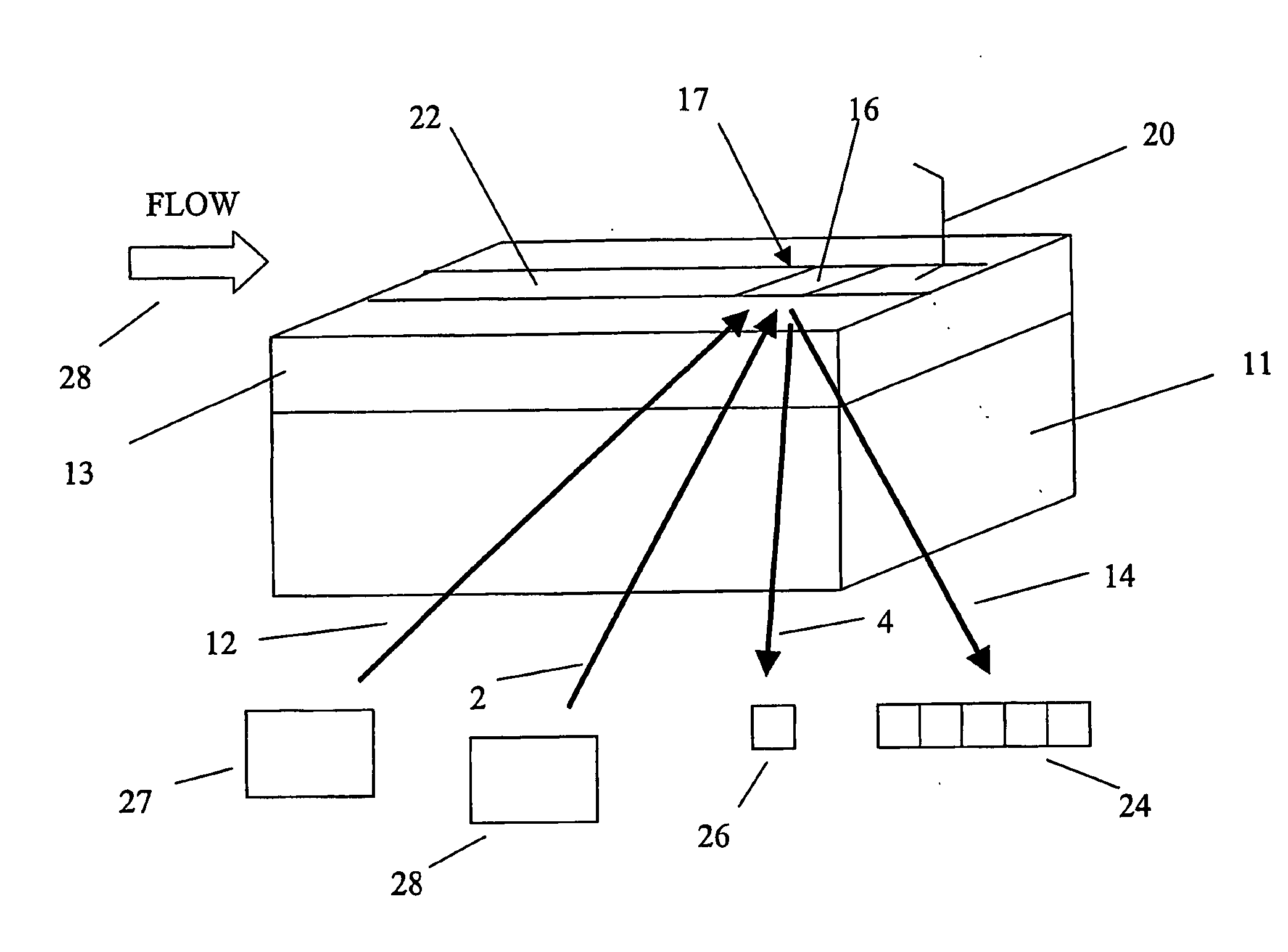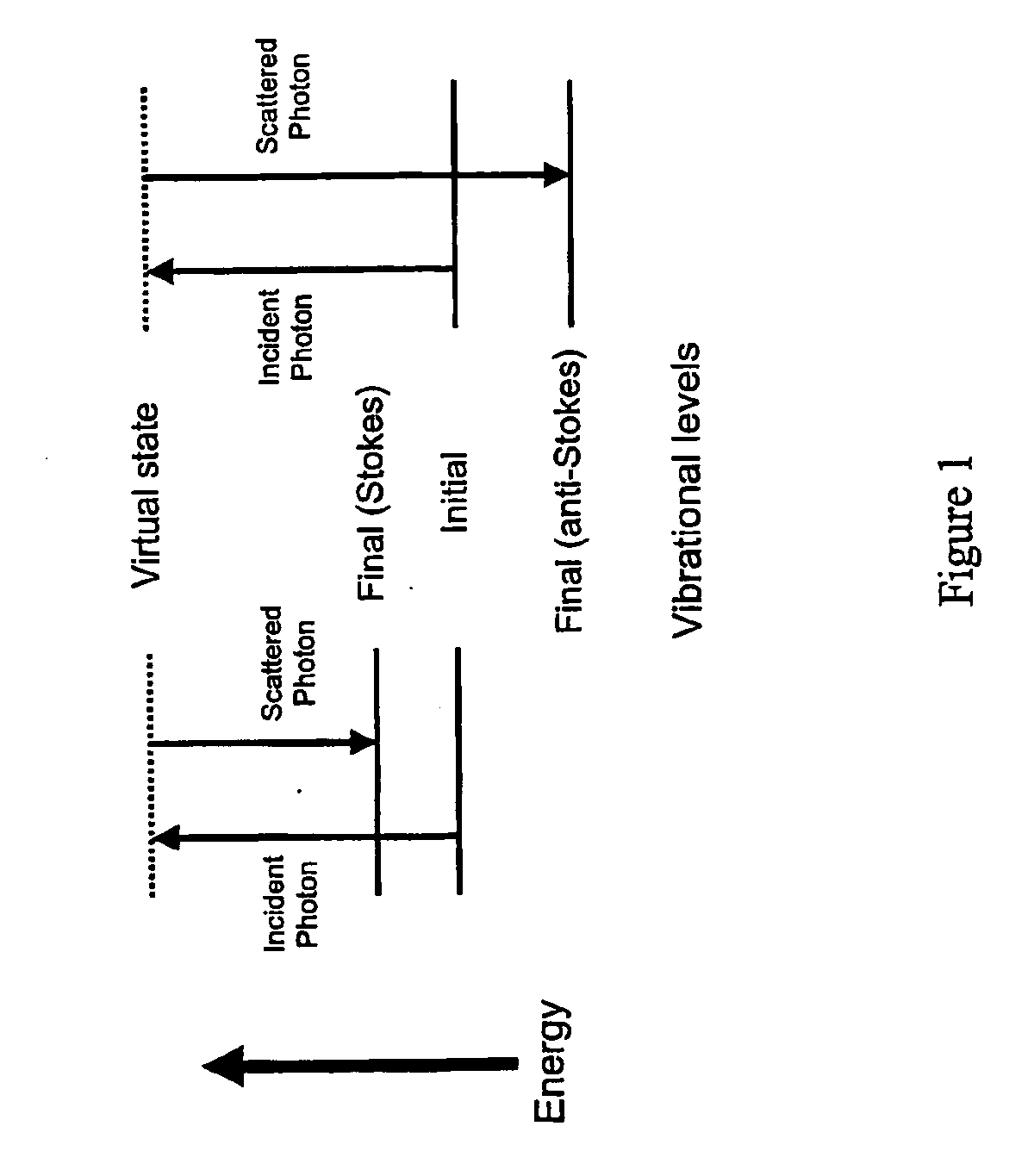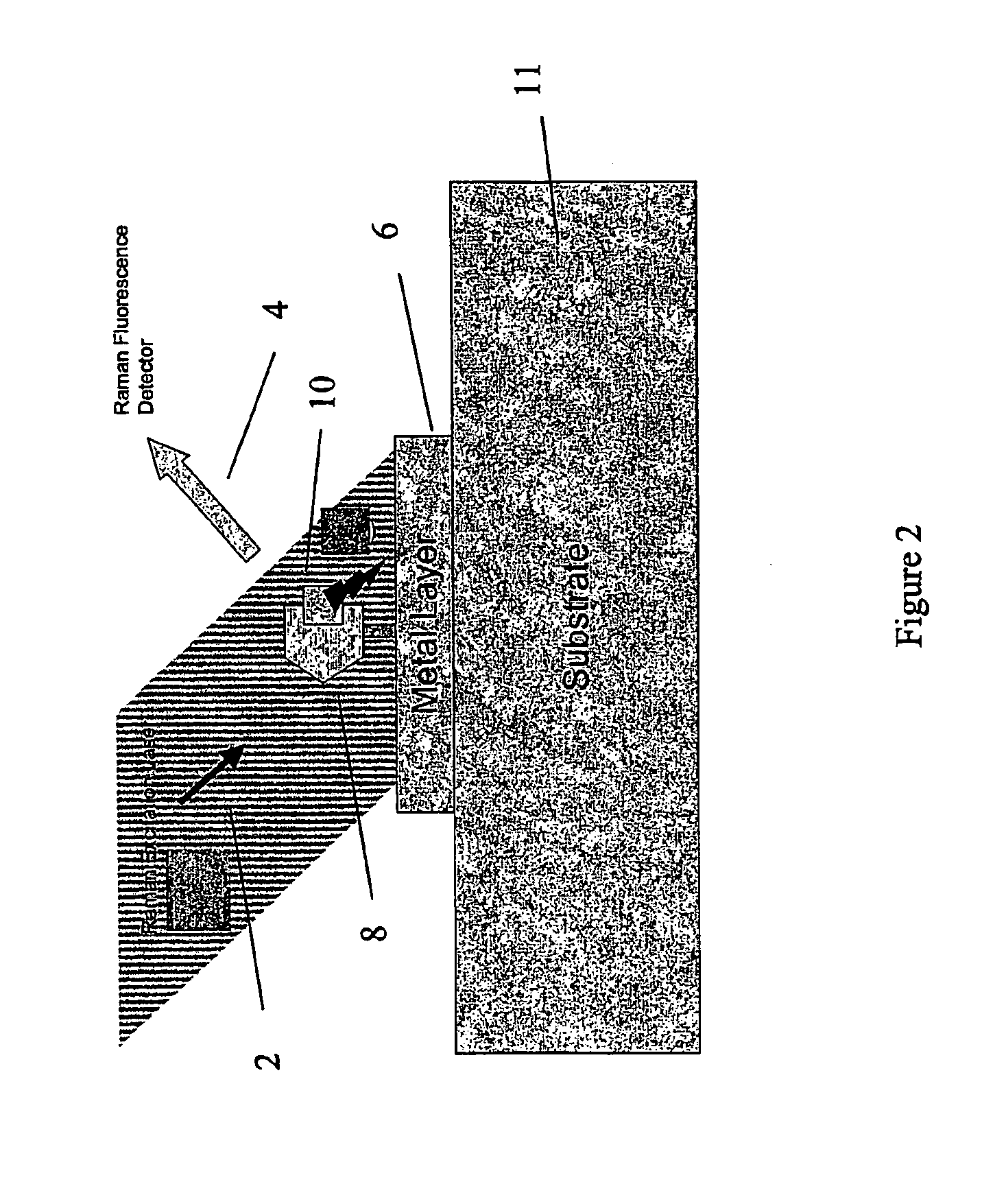Molecular detector arrangement
a detector arrangement and detector technology, applied in the field of molecular detectors, can solve problems such as poor signal-to-noise ratio, and achieve the effects of enhancing raman scattering, enhancing sers effect, and enhancing raman scattering
- Summary
- Abstract
- Description
- Claims
- Application Information
AI Technical Summary
Benefits of technology
Problems solved by technology
Method used
Image
Examples
Embodiment Construction
[0014] The embodiments described uses the technique of Surface Enhanced Raman Spectroscopy (SERS) in synergy with Surface Plasmon Resonance (SPR). These techniques in combination, we have appreciated, can use the incident radiation of laser used for SPR to enhance the SERS effect. The present embodiments comprise two main components: an analyte carrier which provides an analyte region to support molecules to be analysed; and a detector which provides laser radiation to the analyte region on the carrier and has sensors to detect radiation received from the analyte region. Together the analyte carrier and detector comprise a detector assembly.
[0015] The detector itself can comprise various forms of laser source and sensors as described later. The embodiments of analyte carrier, appropriate to the detector can take various forms. The preferred embodiment is a microfluidic chip, but other embodiments include a suitably modified microtiter plate or a prism arrangement also as described ...
PUM
| Property | Measurement | Unit |
|---|---|---|
| thickness | aaaaa | aaaaa |
| plasma wavelength | aaaaa | aaaaa |
| plasma wavelength | aaaaa | aaaaa |
Abstract
Description
Claims
Application Information
 Login to View More
Login to View More - R&D
- Intellectual Property
- Life Sciences
- Materials
- Tech Scout
- Unparalleled Data Quality
- Higher Quality Content
- 60% Fewer Hallucinations
Browse by: Latest US Patents, China's latest patents, Technical Efficacy Thesaurus, Application Domain, Technology Topic, Popular Technical Reports.
© 2025 PatSnap. All rights reserved.Legal|Privacy policy|Modern Slavery Act Transparency Statement|Sitemap|About US| Contact US: help@patsnap.com



